#artist: Franz von Lenbach
Text
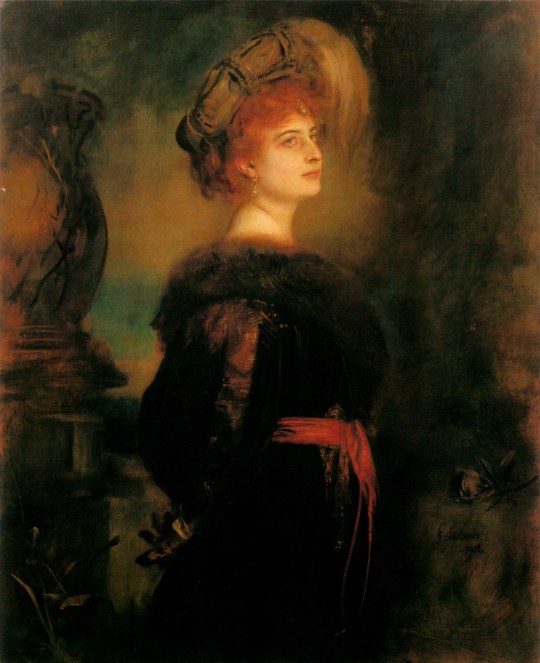
Franz von Lenbach, Portrait of Lily Merk, 1902
11 notes
·
View notes
Text
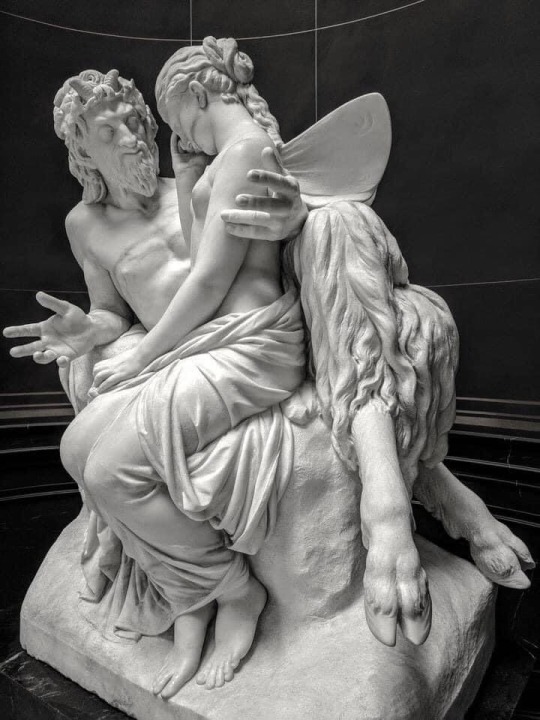
Pan Comforting Psyche (1857-58) “Marble, 101 x 132 x 67 cm” [Alte Nationalgalerie, Berlin, Germany] -- Reinhold Begas (German; 1831 - 1911)
Deserted by Amor, her lover, Psyche bemoans her curiosity and its consequences. Agitated yet demure, she is comforted by Pan, the otherwise frivolous god of nature. The subject allowed Begas to unite a range of contrasts within one sculpture: female/male, tender/rough, youthful/old.
Reinhold Begas was a German sculptor. He was an apprentice under Christian Daniel Rauch and Ludwig Wilhelm Wichmann. From 1856 to 1858 he travelled around Italy where he was influenced by Arnold Böcklin and Franz Lenbach to move towards a naturalistic style in sculpture. In 1861 he was appointed professor at the Weimar art school before winning the competition to create the statue of Schiller at Gendarmenmarkt in Berlin. From 1870 he was the leading artist working in the plastic arts in the Kingdom of Prussia. His artworks dominated the urban landscape, particularly of Berlin, during the German empire. Several sculptures in Berlin bear testament to his high reputation, such as the Neptune fountain in bronze, originally erected on Schlossplatz, the figure of Alexander von Humboldt in front of the Humboldt-Universität or the statue of Otto von Bismarck in the city’s.
Source: Google Arts & Culture
500 notes
·
View notes
Text

Franz von Lenbach
1836 Schrobenhausen – München 1904
Portrait of the artist’s daughter Gabriele in Spanish court costume
Oil on firm cardboard. 1901.
Karl and Faber
20 notes
·
View notes
Text

One year after her grandson's tragic end, and two after the death of her husband, — January 24, 1890* — the Duchess Ludovica fell ill at her palace in Ludvigsstrasse, in Munich.
The Duchess had hardly ever visited her daughters. She had always declared she would live in the air in which her youth had been spent, and there also she would die. The doctors said at once that her condition was very serious, chiefly on account of her years. The hale old lady had nearly always gone through her illnesses sitting in her easy-chair. Although there was every sign that she would not recover from her serious indisposition — influenza and inflammation of the lungs — she could not be persuaded to go to bed. Sophie d'Alençon had been staying with her for some time before she became ill; and her three sons were also in Munich. The absent daughters were informed by telegram of their mother's illness. On the afternoon of January 25, her condition grew worse; and at seven in the evening she received Extreme Unction, from the hands of her domestic chaplain. Nevertheless she would not go to bed, but remained sitting on her couch, where later in the night she sank into a doze. At three in the morning she awoke to slight consciousness, and shortly afterwards the last struggle began. At ten minutes past four death came quietly, and took her from her dear ones.
The Duchess Ludovica was eighty-three and a half years old. A great number of her children, grandchildren, and great-grandchildren were gathered round her in the hour of death. All knelt around her couch ; her son Charles Theodore closed her eyes.
With her died the last member of the Bavarian dynasty whose memory went back to the beginning of the nineteenth century, and to the time of Napoleon the Great.
Tschudi, Clara (1905). Maria Sophia, Queen of Naples: A Continuation of “The Empress Elizabeth” (translation by Ethel Harriet Hearn)
*Tschudi mistakes the dates: it had been almost three years since Crown Prince Rudolf's death (30 January 1889), and over three since Duke Max's (15 November 1888).
ON THIS DAY, IN 1892, DUCHESS LUDOVIKA IN BAVARIA, NÉE PRINCESS OF BAVARIA, DIED AGED 83 YEARS-OLD. She was the youngest surviving daughter of the first King of Bavaria, Maximilian I, and his second wife Caroline of Baden. In 1828 she married her first cousin once removed Duke Maximilian in Bavaria, a member of a cadet branch of the House of Wittelsbach. They had ten children, amongst them Empress Elisabeth "Sisi" of Austria and Queen Marie Sophie of the Two Sicilies.
#I did read somewhere else that at the moment of her dead only Sophie was with her#but well people these are the sources I'm working with#ludovika of bavaria duchess in bavaria#sophie in bavaria duchesse d'alençon#karl theodor duke in bavaria#artist: Franz von Lenbach#historian: clara tschudi#maria sophia queen of naples: a continuation of `the empress elizabeth´ (1905)#on this day in history#historicwomendaily
76 notes
·
View notes
Photo
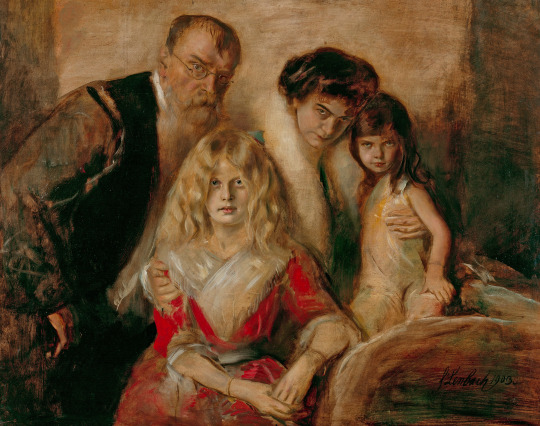

Franz von Lenbach (1836-1904), Self-portrait with wife and daughters, 1903, oil on cardboard, 96 x 122 cm. Lenbachhaus
#franz von lenbach#lenbachhaus#german artist#portrait painting#20th century art#art history#art on tumblr#mysterious art century
217 notes
·
View notes
Photo
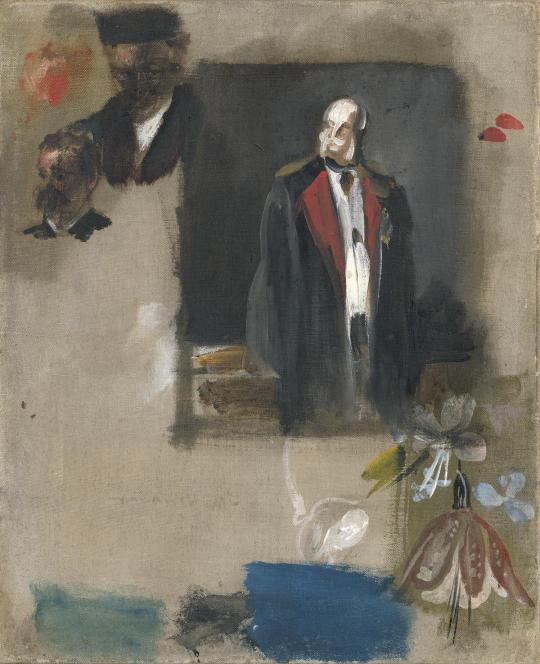
Franz von Lenbach (b.1836 - d.1904), 'Several Oil Studies, with Kaiser Wilhelm I in Uniform, and flowers', oil on canvas, no date (1880s), German, for sale est. 1,800 - 2,400 EUR in Bassenge Gallery Old Master & 19th Century European Paintings sale, June 2020; Berlin, Germany.
The study is most likely for this Franz von Lenbach portrait of Kaiser Wilhelm I, c.1884, found in the Lenbachhaus in Munich, Germany.
#franz von lenbach#known artist#known sitter#kaiser wilhelm I#oil on canvas#1880s#german#bassenge gallery#gallerie bassenge#berlin#lenbachhaus#munich
9 notes
·
View notes
Photo

MWW Artwork of the Day (11/27/20)
Franz von Lenbach (German, 1836-1904)
Family von Lenbach (1903)
Oil on cardboard, 122 x 96 cm.
Staedtische Galerie im Lenbachhaus und Kunstbau, Munich
Lenbach was regarded as the leading German portraitist of his era. An unending procession of prominent members of society came to have their portraits painted. His technique was inspired by Old Masters such as Rubens, Titian, and Veronese, but he was not above availing himself of the new medium of photography as well.
Painting in his signature style, he created portraits of the pope, of emperors and kings, of elegant ladies and eminent politicians and businessmen. His conception of art defined the public face and image of the high society as well as the rising upper middle classes of the late nineteenth century. His family, and especially his daughters Marion and Gabriele, whom he captured in sophisticated portraits that circulated in large numbers of reproductions, became public figures.
1 note
·
View note
Photo

Franz von Lenbach (1836-1904)
“The Summer Meadow” (1860)
Oil on canvas
#paintings#art#artwork#genre painting#portrait of a boy#franz von lenbach#oil on canvas#happy#content#lounging#1860s#mid 1800s#mid 19th century#german artist#genre scene#fine art#lazy#blue sky
570 notes
·
View notes
Photo
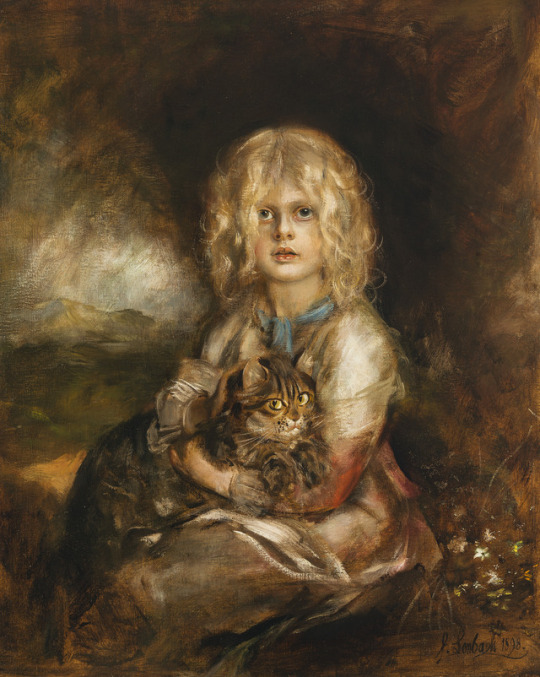
Daughter Marion with cat - Franz von Lenbach , 1898
German,1836-1904
Oil on cardboard, on canvas , 86 x 68 cm
169 notes
·
View notes
Photo

Marion Lenbach (1892–1947), the Artist's Daughter by Franz von Lenbach, European Paintings
Bequest of Collis P. Huntington, 1900 Metropolitan Museum of Art, New York, NY
Medium: Oil on canvas
http://www.metmuseum.org/art/collection/search/436876
231 notes
·
View notes
Text
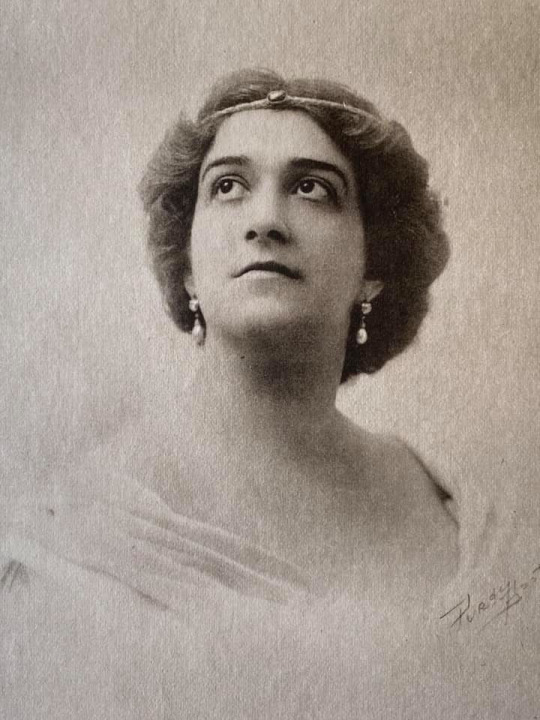
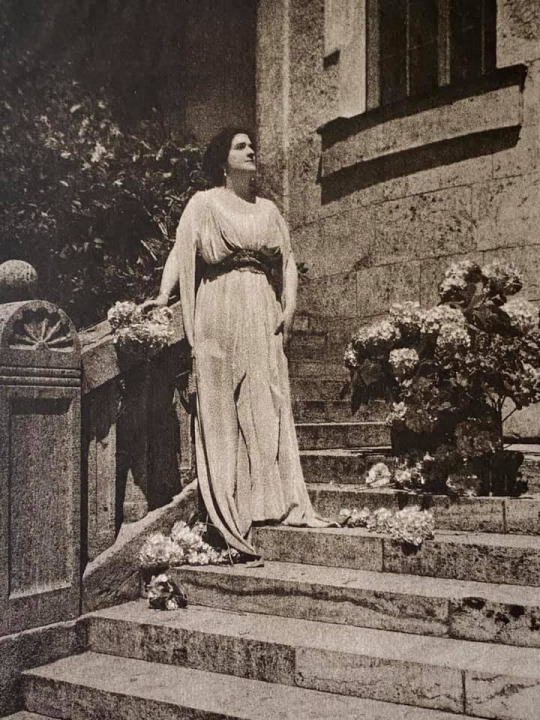


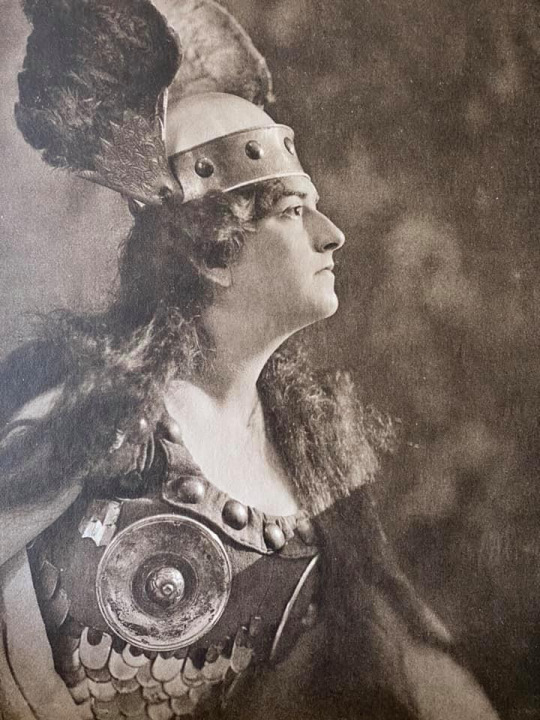
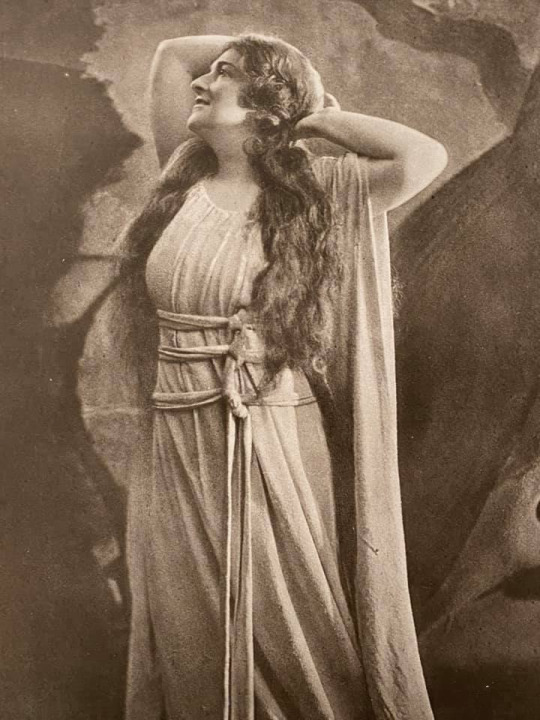
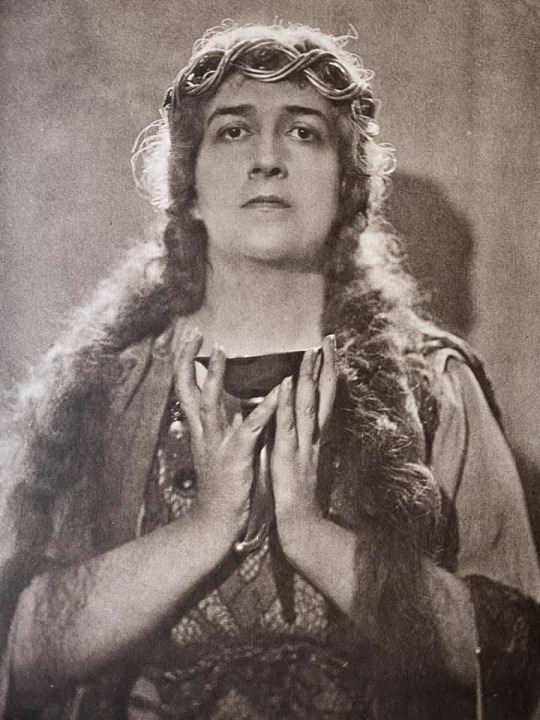

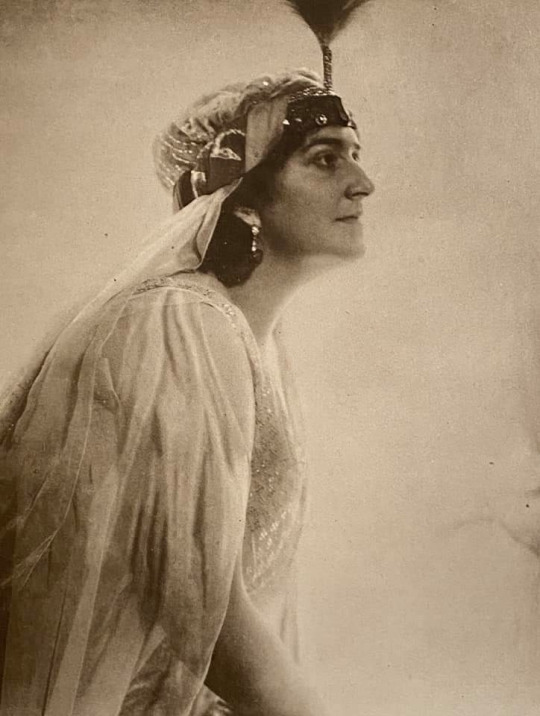
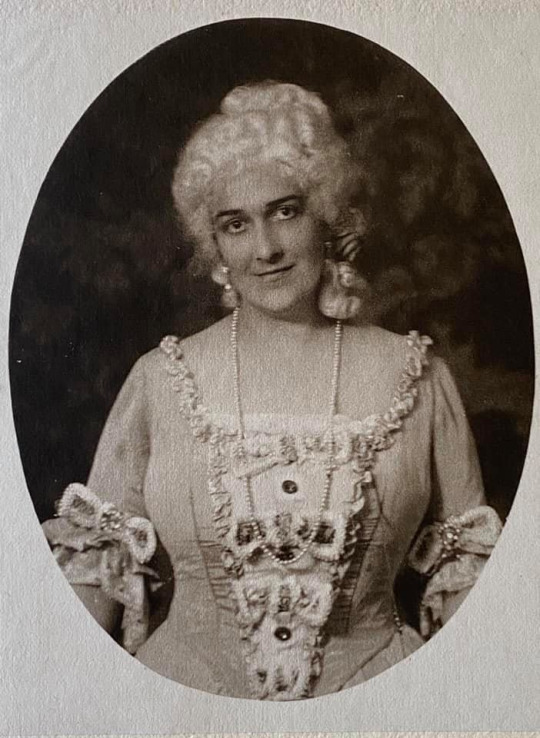
Berta Morena was born Berta Meyer in 1878, at Mannheim. After completing her studies with Mrs Röhr-Brajnin, Regina de Sales and Aglaja von Orgeni she made her debut in 1898 at the Münchner Hofoper as Agathe in Freischütz. The debut was successful and the critics were full of praise for her beautiful voice as well as for her beauty. During the next seasons she appeared in a variety of roles, gradually gaining a reputation, especially in Wagnerian roles. From 1903 she sang Brünnhilde, from 1907 she was very successful as Leonore in Fidelio. Within a short time, she became Munich’s most beloved singer, appearing there as Elisabeth, Elsa, Eva, Isolde, Kundry, Sieglinde, the Brünnhildes, Senta, Santuzza, the title role in Lachner’s Catharina Cornaro, Kassandra in Weingartner’s Orestes, Giulietta in Les Contes d’Hoffmann, Aida and in Charpentier’s Louise. One of her best roles was Rachel in Halévy’s La Juive. In 1908 she was invited to sing at the Metropolitan, where she appeared in 56 performances during four seasons singing Leonore in Fidelio under Gustav Mahler, but she could not erase still vivid recollections of Lilli Lehmann and Amalie Materna in the role. Elisabeth and Sieglinde were considered the best performances during her Met career. Berta Morena sang widely as a guest artist, in Vienna, Hamburg, Frankfurt, Hannover, Karlsruhe, Berlin (Hofoper), Zurich, Barcelona, Budapest National Opera and London (1914). At Covent Garden, she did not please neither as Isolde nor as Kundry, but her Sieglinde was exceptional. In 1923 she celebrated her twenty-fifth anniversary of membership at the Munich Opera. Soon after she left the Munich Opera on account of disagreements with the management reappearing as Brünnhilde at the Metropolitan. It was not until 1927, that she bade farewell to her audience to become a sought-after singing tutor. Berta Morena died in 1952, at Rottach-Egern (Bavaria). Bertha Morena was one of the most celebrated artists in Munich for 25 years, not only because of her vocal quality as a ‘Hochdramatische’ but also because of her splendid appearance which induced no less an artist than Franz von Lenbach to paint her portrait. When listening to her records you will hear a dark-timbred soprano voice, occasionally having some difficulties with the heights, but she is definitely not a mezzo-soprano as the critic Alfred von Mensi-Klarbach stated at the beginnin of her career. Hers is a warm, bright voice with a quick vibrato, in my opinion ideally suited to the lyric-dramatic repertory.
#Berta Morena#Metropolitan Opera#Covent Garden#Richard Wagner#Carl Maria von Weber#Parsifal#Tristan und Isolde#Lohengrin#Pietro Mascagni#Cavalleria rusticana#Tannhäuser#Ludwig van Beethoven#Fidelio#Die Walküre#Gustav Mahler#Royal Opera House#Der Freischütz#Les Contes d'Hoffmann#Jacques Offenbach#Fromental Halévy#La Juive#Aida#Giuseppe Verdi#Le Nozze di Figaro#Wolfgang Amadeus Mozart
3 notes
·
View notes
Photo

Franz von Lenbach "Shepherd boy" 1860 #Lenbac #art #artist #photooftheday #illustration #design #drawing #artwork #digitalart #picoftheday #artoftheday #instaartist #instaart #portrait #artsy #artistsoninstagram #love #arte https://www.instagram.com/p/CUTLx_6o77m/?utm_medium=tumblr
#lenbac#art#artist#photooftheday#illustration#design#drawing#artwork#digitalart#picoftheday#artoftheday#instaartist#instaart#portrait#artsy#artistsoninstagram#love#arte
2 notes
·
View notes
Text

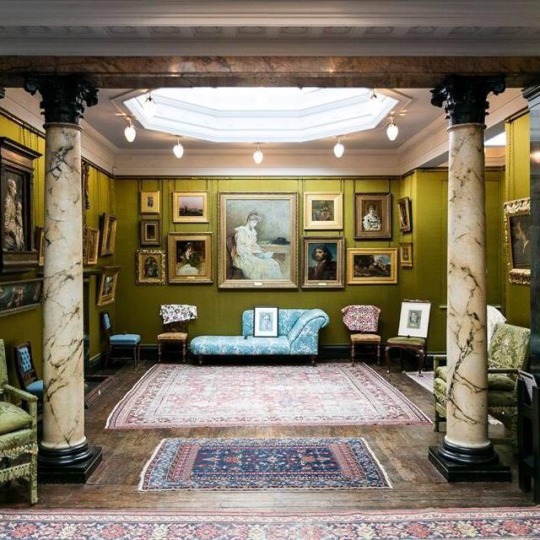



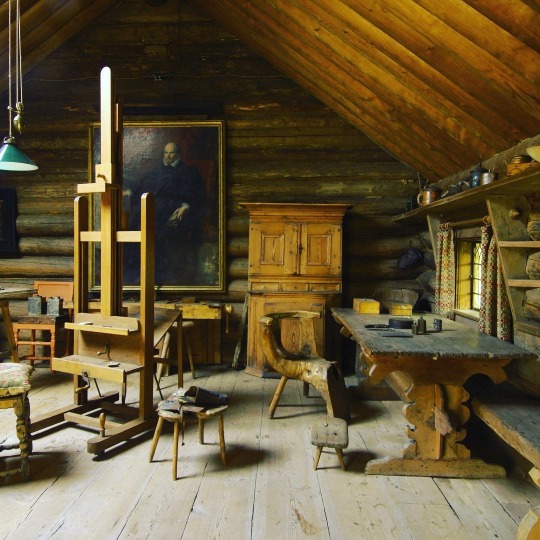
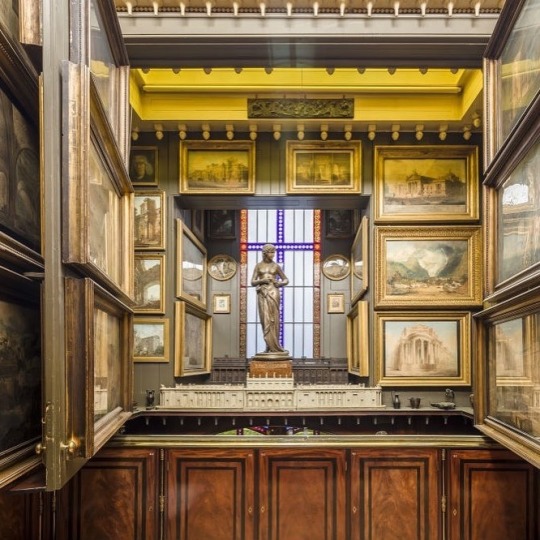


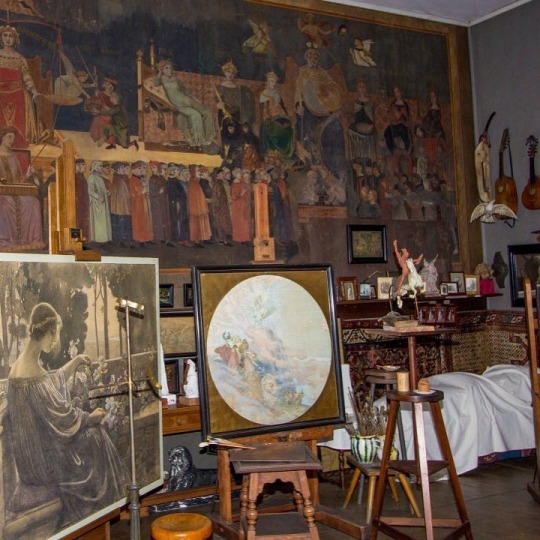
1- The Municipal Gallery at the Lenbachhaus is an art museum in Munich, Germany, opened in 1929. Former home of the realistic artist Franz von Lenbach (1836-1904)
2- The Leighton House Museum is an art museum in the Holland Park area of the Royal Borough of Kensington and Chelsea in West London. The building was the home of the painter Frederic Leighton, first Baron Leighton (1830-1896).
3- Casa Buonarroti is a museum dedicated to Michelangelo in the city of Florence, located in the palace of the Buonarroti family. His main interest is the collection of works by the illustrious sculptor gathered over the centuries by the Buonarroti family.
4- Prins Eugens Waldemarsudde is a museum located in Djurgården, in the center of Stockholm, Sweden. It was the former home of the Swedish prince Eugen. After his death (1947) the house became a museum.
5- James Ensor House, Ostend, Belgium is the surreal house of the expressionist painter James Ensor (1860-1949). The museum shows the spaces where the artist lived and worked, furnished with authentic furniture, full size reproductions and documentary presentations.
6- Leonard Zorn (Mora, Dalarna 1860-1920) was a Swedish impressionist painter, sculptor and printmaker. After his death, his wife Emma founded the Anders Zorn Museum, located in his hometown in 1939. It contains a sample of the Swedish artist's work in all its facets.
7- Sir John Soane’s Museum is a house museum, formerly the home of the neoclassical architect John Soane, located in Holborn, London. It contains many drawings and models of Soane's projects and collections of paintings, drawings, and antiques that he collected.
8- The Mesdag Collection is an art museum in The Hague, Netherlands. The museum is located next to the old house of the Dutch painter Hendrik Willem Mesdag and displays the art that Mesdag and his wife Sina van Houten collected and from painters of the Hague School.
9- Watts Gallery - Artists' Village is an art gallery in the village of Compton, Surrey UK. It is dedicated to the work of the Victorian painter and sculptor George Frederic Watts.
10- Julius Kronberg Studio, Stockholm, Sweden was specially designed for the artist Julius Kronberg (1850-1921). Visitors can view Kronberg's paintings on-site, along with sketches for his frescoes and the sculptures he created to use as models for his paintings.
295 notes
·
View notes
Text
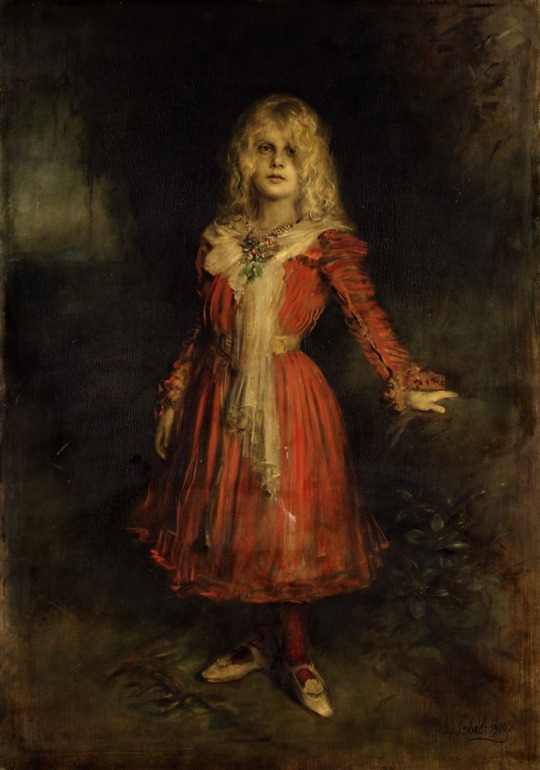
Marion Lenbach (1892–1947), the Artist's Daughter
1900
Franz von Lenbach German
The Metropolitan
14 notes
·
View notes
Photo

Franz von Lenbach (1836-1904), 'Schlangenkönigin' (Serpent Queen), 1894
345 notes
·
View notes
Photo
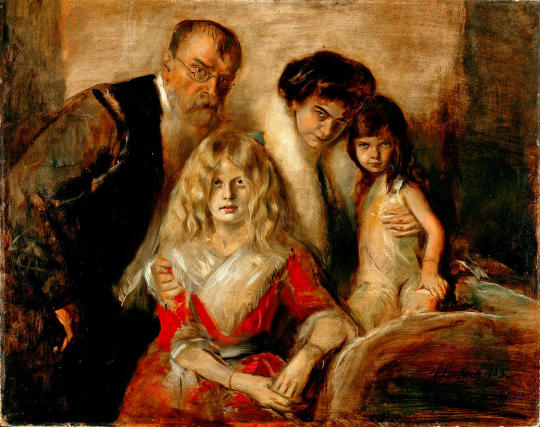
FRANZ SERAPH LENBACH
On this day of 13th December, Franz Seraph Lenbach, after 1882, Ritter von Lenbach (13 December 1836 – 6 May 1904) was born in South Tyrol, Germany.
He was a painter known for his portraits of prominent personalities. He was often referred to as the "Malerfürst" (Painter Prince).
Lenbach had his primary education at Landsberg, then attended a business school in Landshut, and was apprenticed to the sculptor Anselm Sickinger.
He studied at the Augsburg University of Applied Sciences. While there, he drew and painted in his spare time, befriended Johann Baptist Hofner, the animal painter, and decided to become an artist. He obtained his family's reluctant permission to study at the Academy of Fine Arts, Munich, and later took private lessons from Hermann Anschütz.
Lenbach was already an accomplished artist when he became the pupil of Karl von Piloty. In 1858, he staged an exhibition at the Glaspalast and received a scholarship. Works such as A Peasant seeking Shelter from Bad Weather, The Goatherd, and The Arch of Titus was the outcome of his visit to Rome.
In Munich, he took the appointment of professor at the Weimar Saxon Grand Ducal Art School. During this time, he also found an important patron; Baron Adolf Friedrich von Schack. Through his support, he had a guaranteed annual income.
He won a gold medal at the Exposition Universelle and went to Spain, accompanied by his student, Ernst Friedrich von Liphart to make copies of the Old Masters for Schack. His breakthrough came in 1869, when he won a gold medal at the Glaspalast, despite being up against many fashionable French painters.
In 1882, he was awarded the Order of Merit of the Bavarian Crown, which entitled him to become "Von Lenbach". In 1885, he was commissioned to do a portrait of Pope Leo XIII. As the Pope did not have time to sit for the portrait, a new technique was used to create a photographic template.
Around 1900, he started to produce trading card designs for the Stollwerck chocolate company of Cologne.
Most of Lenbach's paintings are in the Frye Art Museum in Seattle, Washington, and portraits of Bismarck and Gladstone are in the National Galleries of Scotland and in the Palace of Westminster.
2 notes
·
View notes